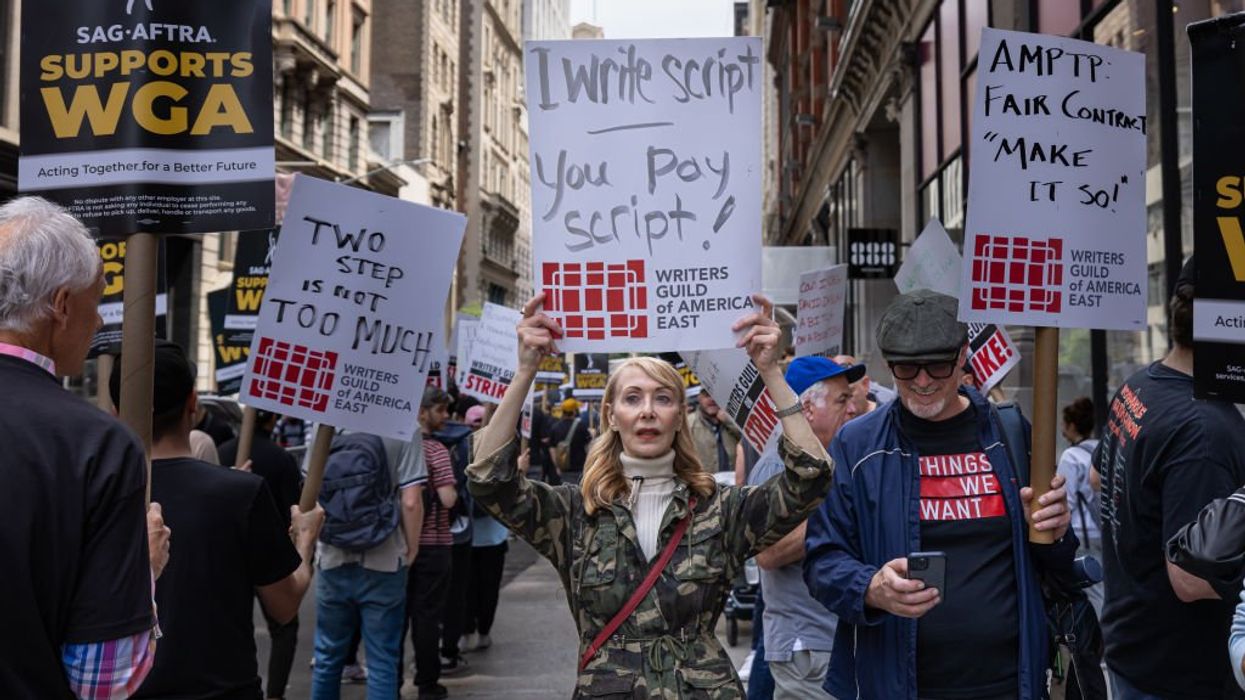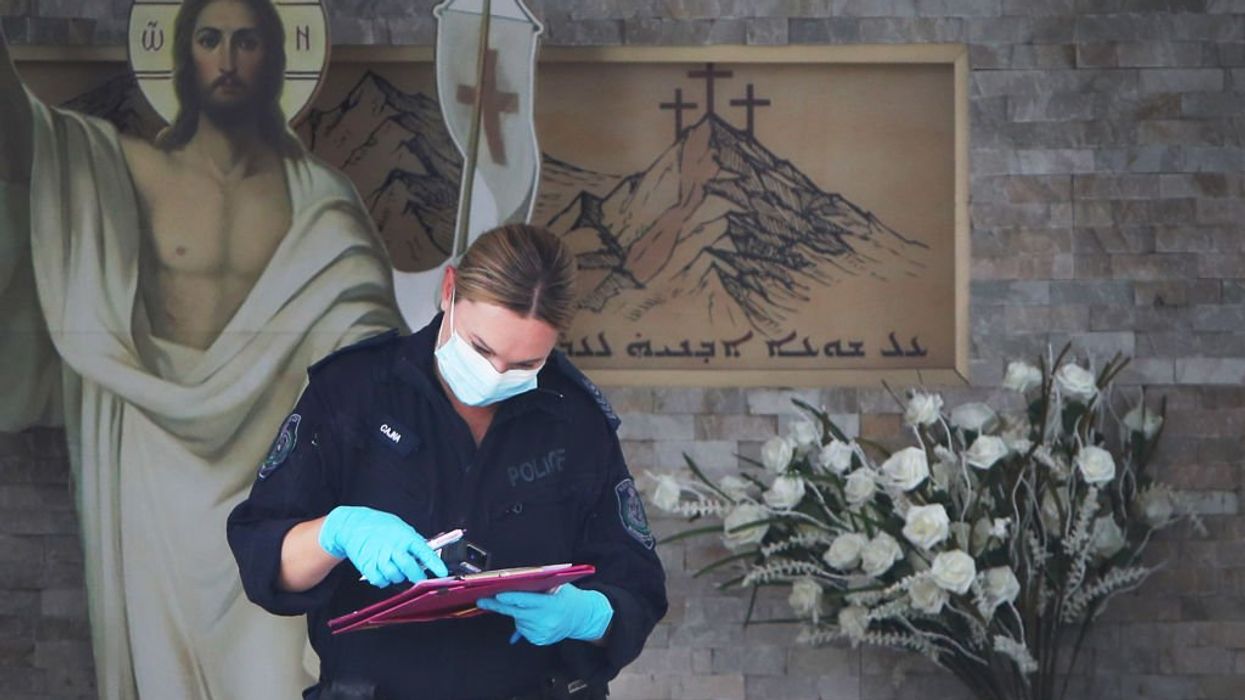
© 2024 Blaze Media LLC. All rights reserved.
As American as Blue Jeans': Check out the Shariah-Compliant Entries to the American Hijab Design Contest
May 02, 2013
"If you really study Shariah, Islamic law — rather than what Fox News says Shariah is — women just have to be covered.”
The American Hijab Design Contest, aiming to present the hijab - or Muslim headscarf - as an accessory “as American as blue jeans” wrapped up over the weekend in Chicago.
The contest challenged designers “to create an American style of hijab.” Its website described some of the motivations behind the competition:
The way we generally see hijab worn in America these days is an Arab scarf style on top of American style outfits.However, in the Victorian period, when it was generally fashionable for women to wear hats, Muslim women would adapt the style by simply adding a separate scarf around their neck, so as to be fully covered. They did not switch the hat out for an Arab-style scarf.
We’re looking for our nation’s most creative designers to create a truly American hijab style that speaks to today’s American fashion.
To qualify as a hijab under contest rules, all entries had to cover “everything but the hands, face, and feet in a non-formfitting and non-sheer manner.”
The winning design was a camel-colored, quilted knee-length tunic, worn with tights, high boots and instead of the classic hijab, a turtleneck and a knit hat.
 The winning design by Sarah Musa (Image from americanhijabdesign.com)
The winning design by Sarah Musa (Image from americanhijabdesign.com)
The creator of the winning entry, New Yorker Sarah Musa, described by the Chicago Tribune as “a technical designer for an American fashion and lifestyle company,” also entered this design which covers the entire face below the eyes:
 Contest winner Sarah Musa also entered this design (Image from americanhijabdesign.com)
Contest winner Sarah Musa also entered this design (Image from americanhijabdesign.com)
Though millions of Muslim women worldwide wear the hijab for religious reasons, the Wall Street Journal described the contest as a way “to make the hijab hip,” suggesting the potential trend-setting possibilities as exemplified by Audrey Hepburn, Grace Kelly and Jackie Kennedy, who themselves wore headscarves.
In a December feature on the contest, the Wall Street Journal wrote:
Now, the creator of the American Hijab Design Contest is trying to extend the hijab beyond the Muslim population, and help build a following for a fashion trend she calls “covered chic.”“The scope of covered chic fashion far exceeds the Muslim population,” says Shaz Kaiseruddin, 31, a human rights attorney based in Chicago and the creator of the contest. “A hijab is as American as blue jeans.”
Kaiseruddin hopes to build support for an “American hijab,” a headscarf that can have as many styles in a nation as diverse as America.
And she hopes to shake up the belief that the hijab, and Muslims, are foreign to America, and show that headscarves are fashion accessories anyone—regardless of faith—can play with in their wardrobes.
Muslim-American fashion designer Nzinga Knight told the Journal: “The notion of covering the hair because of religion is so ancient.”
Knight and Kaiseruddin told the Journal that covering up modestly is not a sign of oppression, but rather free choice.
Anti-radical Islam blogger Pamela Geller disagrees. In a December post criticizing the contest, she wrote: “Norming the sharia. More cultural jihad, now using fashion as the conduit to norming sharia. Trying to make the hideous fashionable, the hijab, niqab, etc. as ‘covered chic.’”
Contest winner Sarah Musa told the Chicago Tribune this week: "If you really study Shariah, Islamic law — rather than what Fox News says Shariah is — women just have to be covered."
"So whether you use a hat and turtleneck, or funk it out with a turban style, it's still a hijab. In Saudi Arabia they might wear black. But in America we may choose to wear jeans and jean jackets. The creativity is limitless as long as she meets modesty guidelines. Basically everything is covered but the hands and face," she added.
Musa told the Tribune. "I want to make a woman feel liberated, regardless of her faith."
All of the entries can be viewed on the contest's website. Here are some of them, including the first two which were inspired by the 1920s:
 Image from americanhijabdesign.com
Image from americanhijabdesign.com
 Image from americanhijabdesign.com
Image from americanhijabdesign.com
The contest website does not describe the significance of the blood-soaked peace sign in this next design, with an African American depicted as “night” and a white woman is depicted as “day.”
 Image from americanhijabdesign.com
Image from americanhijabdesign.com
And a funky over-sized bow with cool dark shades:
 Image from americanhijabdesign.com
Image from americanhijabdesign.com
(H/T: Al-Arabiya)
Want to leave a tip?
We answer to you. Help keep our content free of advertisers and big tech censorship by leaving a tip today.
Want to join the conversation?
Already a subscriber?
more stories
Sign up for the Blaze newsletter
By signing up, you agree to our Privacy Policy and Terms of Use, and agree to receive content that may sometimes include advertisements. You may opt out at any time.
© 2024 Blaze Media LLC. All rights reserved.
Get the stories that matter most delivered directly to your inbox.
By signing up, you agree to our Privacy Policy and Terms of Use, and agree to receive content that may sometimes include advertisements. You may opt out at any time.


